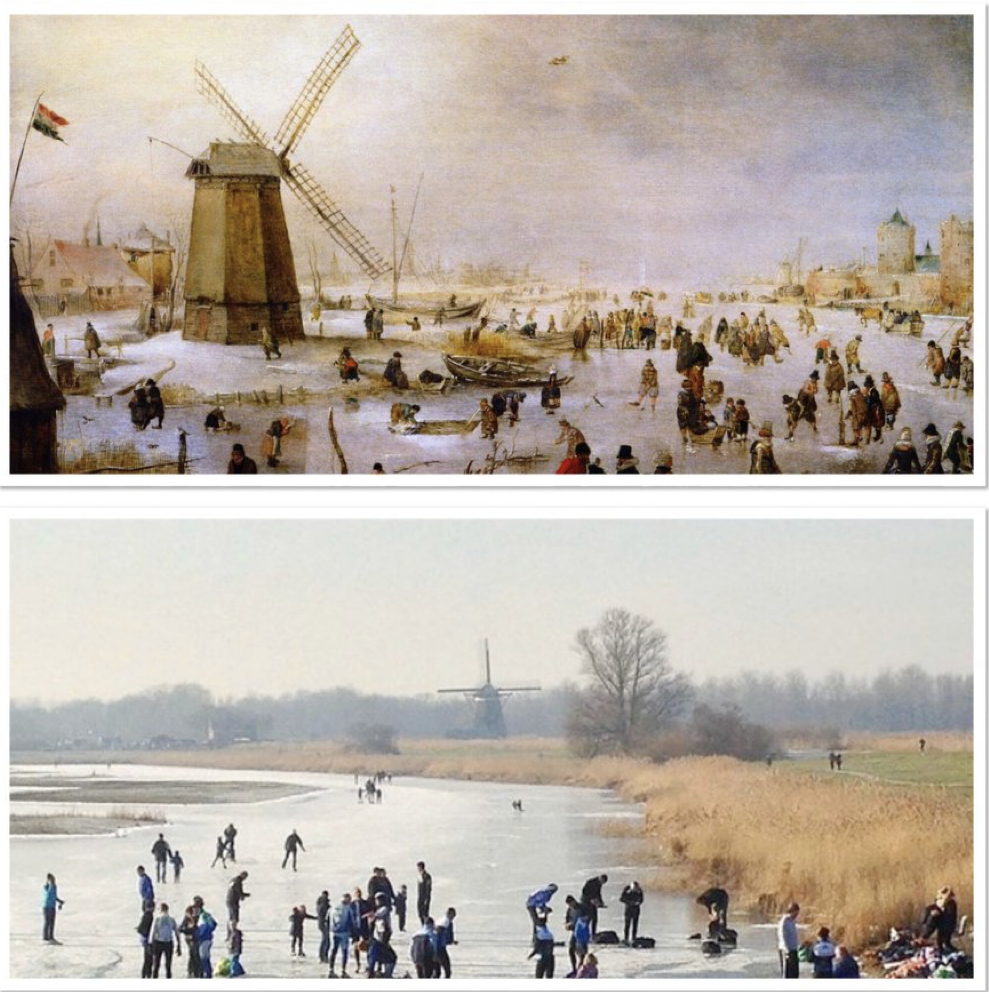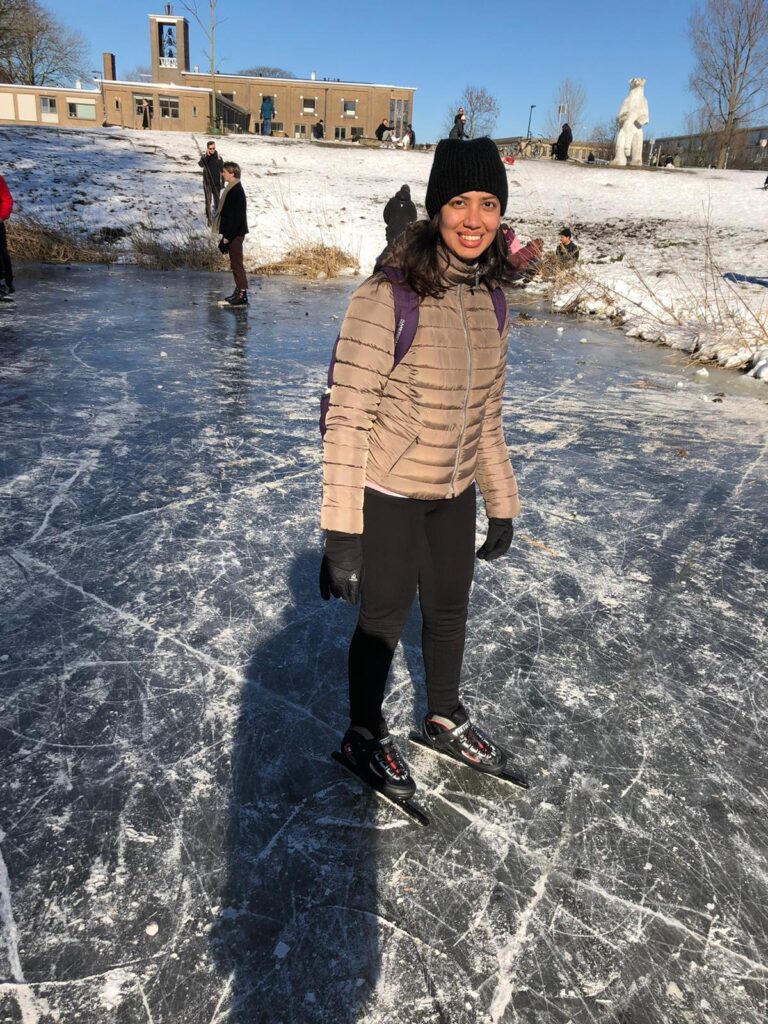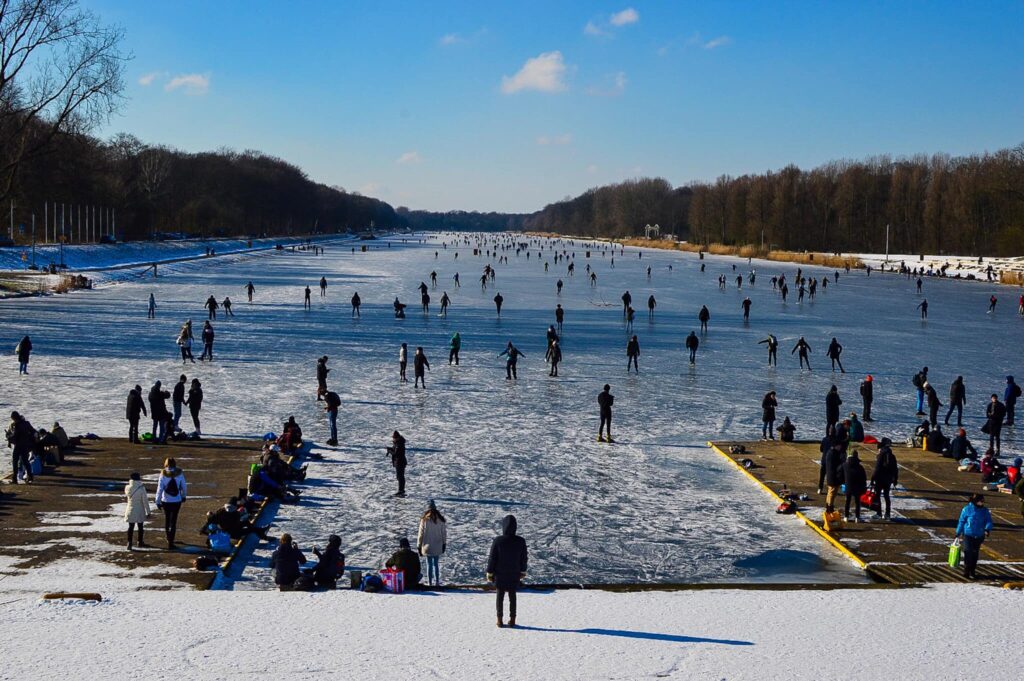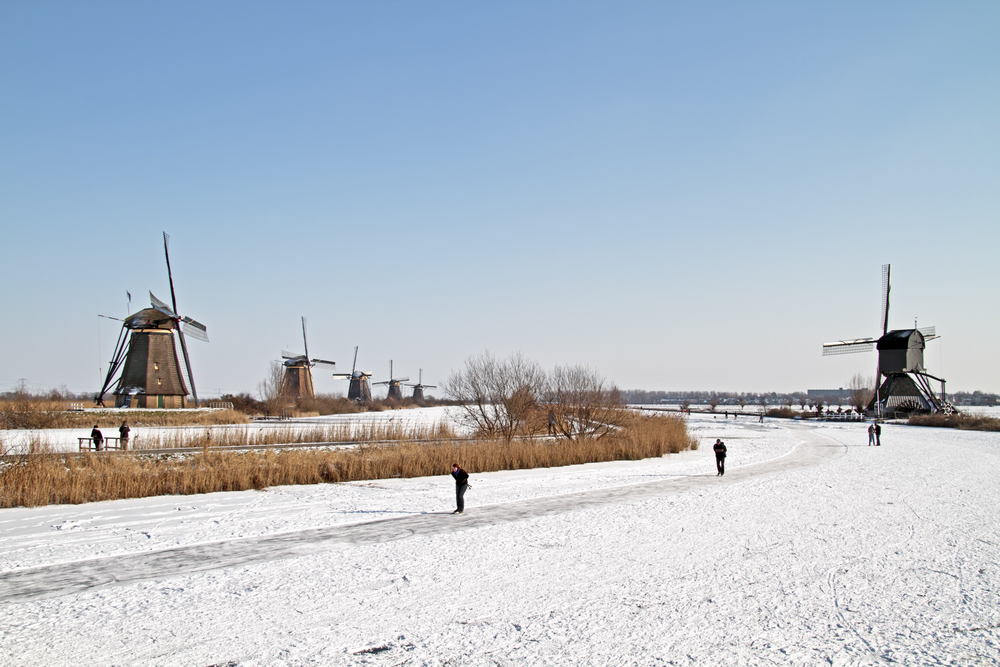I am writing this article after the crazy ice fever I witnessed this year. As an expat I have seen fellow expats complaining about harsh winters, but the locals always seem to enjoy it. Yes it is partly because they have grown up in this weather, but it is also due to their culture, engagement in outdoor sports, and mostly (in my opinion) their positive attitude towards everything.
The announcement of a snow storm followed by a dry frost swept like a wave of euphoria around the country. I saw everyone preparing for the storm, not by arranging for food or thinking about how they would travel, but by buying sleds and sleighs, sharpening their dust-ridden skates, and enforcing a sailing ban (not for safety reasons but for promoting ice growth so people could enjoy).
This country usually has a maritime climate and does not receive a lot of snow. The canals also do not freeze every year, thanks to global warming. They freeze once in 3-4 years and the bigger rivers, lakes very rarely. So any amount of snow is special, and 10-15cms was like a bunch of cherries on top. The icing however quite literally was the thick frost developed on top of water reservoirs.

Ice skating as a sport has a few different types. The form most popular here is speed-skating, either on long distance or short tracks. It is done using skates with extra long blades, and has found a special place in this cold windy country. It is like a national obsession, a childhood memory, a feeling of pride, and a heritage that is very personal – to kids and adults alike. They have been skating since the 13th century, are world leaders in this sport and have even organised the biggest ice skating event – The Elfstedentocht, a 200 km skating marathon on natural canals spanning across eleven cities. The event has not taken place since 1997, but the anticipation and hope that it would happen again is real.
Skating on natural ice surrounded by anything from windmills, bridges, parks to dutch houses gave a unique thrill of being able to connect with nature in such a wonderful way. While gliding over the rivers, I felt a mix of power and tenderness. Power from being able to skate without fear wherever I wanted to, and being careful to not crack the delicate ice.

Sometimes we get ijsvrij (ice-free), literally meaning free time off to enjoy the ice because it does not happen so often. It was a bucket list thing for me to do, something I thought I would have to travel to northern countries for. But I was beyond excited when I could tick off this thing in my own backyard during the pandemic. It made me realise the untouched beauty that nature provides us, and how we don’t have to put in so much effort to get that adrenaline.

Despite not being able to skate much on natural waters, people here have managed to keep their passion alive. Over the years, the country has built a dedicated cultural and athletic infrastructure for skating fanatics. By decentralising the sport, hundreds of clubs exist together competing in events all around the world. Some of the clubs even manage their own rinks contributing to 21 long track rinks in the country. To give a comparison of how big a deal it is, The United States has only 6. This effort has definitely been rewarded back because of the whopping 121 medals Netherlands have won at the Winter Olympics only in speed skating.
I just wanted to share my experience and my feelings about this culture and land, that I find truly amazing and nothing short of inspiring. Natural frost is not that uncommon in some other cold countries, but using it to reduce the dullness of winters is still rare. I continue to learn something everyday in this mystical place, and I am overwhelmed and grateful for living here at the moment.
If you want to admire dutch crowds skating on the canals or give it a try yourself, keep watching the weather predictions and do your bit to reduce global warming!

